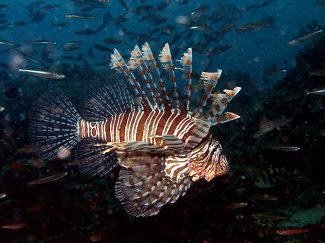When Is The Best Time To Clean Your Boat To Stop The Spread Of Aquatic Nuisance Species
On this folio:
- What are aquatic nuisance species?
- How practise aquatic nuisance species spread?
- As a vessel owner/operator, how tin can I help preclude the spread of aquatic nuisance species?
- How is the EPA involved in addressing aquatic nuisance species?
What are aquatic nuisance species?
Aquatic nuisance species are organisms that disrupt the ecological stability of infested inland (e.thousand., rivers and lakes), estuarine or marine waters. Beyond doing ecological impairment, the infestation may impair the recreational, commercial and agricultural uses of the water body.
How do aquatic nuisance species spread?

There are many pathways for invasion by aquatic nuisance species. Globalization has vastly increased long-altitude travel and commerce, and highly altered waterways. These and other factors take increased the frequency by which nonindigenous plants, animals and pathogens are introduced to new areas, sometimes with costly results. Some of the more common pathways are listed below.
- Ballast water
- Boat hulls, fishing gear and other recreational pathways
- Aquaculture escapes
- Intentional introductions
- Aquaria releases
- Live food industry
- Escaped ornamental plants, nursery sales or disposals
- Fishing bait releases
- Illegal stockings
As a vessel possessor/operator, how can I help foreclose the spread of aquatic nuisance species?

Canoeing activities can contribute to the problem of aquatic nuisance species. These species tin "hitchhike" from one ocean to another by:
- Attaching to portions of your boat (east.g., hull, rudder, ballast) or trailer
- Attaching to recreational equipment such as fishing gear, water floats and snorkeling equipment
- Being carried in the bilge, ballast tank or live well
Many state agencies recommend inspecting boats, trailers and recreational equipment earlier utilize and afterwards use; removing any attached plants or animals; and, if possible, disposing of them in a manner such that they cannot reenter the water.
If you are planning to motion your boat to a different water trunk, recommended practices include thoroughly cleaning, draining and drying your gunkhole prior to transporting it to a new location.
How is the EPA involved in addressing aquatic nuisance species?
The EPA is an active participant in the Aquatic Nuisance Species (ANS) Job Strength, an intergovernmental organization dedicated to the prevention and command of aquatic nuisance species in the United States. For more data on this work, visit the ANS Task Force website by clicking HERE.
The EPA is also involved in enquiry to detect and monitor aquatic nuisance and invasive species, which you tin read well-nigh Here. In 2008, the EPA produced a report entitled, "Effects of Climate Change on Aquatic Invasive Species and Implications for Direction and Research." This report can exist accessed Here.
In improver, the EPA addresses aquatic nuisance species using numerous regulatory tools. The EPA's National Pollutant Discharge Emptying System (NPDES) Vessel General Permit (VGP) and Small Vessel General Permit (sVGP) regulate discharges incidental to the normal performance of commercial vessels, including ballast water and hull fouling, which are both pathways for introductions of aquatic nuisance species. The EPA and the Department of Defense are jointly developing the Uniform National Discharge Standards for vessels of the War machine which will too regulate anchor water and hull fouling to aid control the introduction of aquatic nuisance species.
Source: https://www.epa.gov/vessels-marinas-and-ports/aquatic-nuisance-species-ans
Posted by: hicksbaginert79.blogspot.com


0 Response to "When Is The Best Time To Clean Your Boat To Stop The Spread Of Aquatic Nuisance Species"
Post a Comment